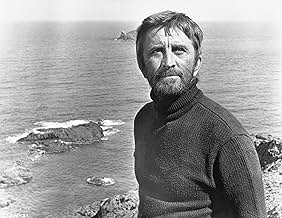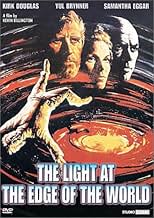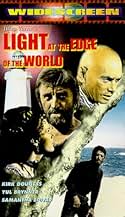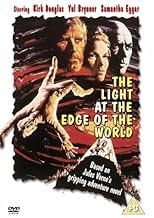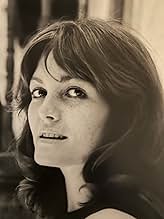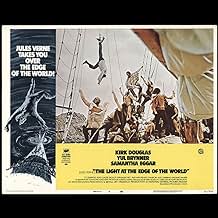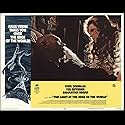AVALIAÇÃO DA IMDb
6,0/10
2 mil
SUA AVALIAÇÃO
Adicionar um enredo no seu idiomaA ruthless pirate captures the keeper of a lighthouse, in the most southern city in Argentina. His goal is obvious and horrific. He plans to control the lighthouses signals in a way that the... Ler tudoA ruthless pirate captures the keeper of a lighthouse, in the most southern city in Argentina. His goal is obvious and horrific. He plans to control the lighthouses signals in a way that the passing ships will be crushed on the rocks.A ruthless pirate captures the keeper of a lighthouse, in the most southern city in Argentina. His goal is obvious and horrific. He plans to control the lighthouses signals in a way that the passing ships will be crushed on the rocks.
- Direção
- Roteiristas
- Artistas
- Prêmios
- 1 indicação no total
Jean-Claude Drouot
- Virgilio
- (as Jean Claude Drouot)
Aldo Sambrell
- Tarcante
- (as Aldo Sanbrell)
Tito García
- Emilio
- (as Tito Garcia)
Víctor Israel
- Das Mortes
- (as Victor Israel)
Luis Barboo
- Calsa Larga
- (as Luis Bar Boo)
Martin Uviente
- Balduino
- (as Martin Uvience)
Avaliações em destaque
Pirates led by the supremely evil Yul Brynner, take over a lighthouse run by Kirk Douglas, Fernando Rey on a rocky island. They then execute a devious plan to cause ships to run aground, pillaging their wrecks. Douglas survives, and he desperately fights their plot whilst plotting and planning to avoid Brynners gang of demented bloodthirsty savages, Sammantha Eggar is the shipwrecked maiden that avoids the pirates slaughter soon complicates the situation. 'The Light At The Edge Of The World' is based on a novel by Jules Verne. It is nothing short of thrilling and for it's time shocking, It deserves a little more recognition.
This is an adventure film based on a Jules Verne's novel about a pirate captain and his crew that take over a small island with a lighthouse on it; the idea is to turn out the light at night when ships are at sight so that they crash against the rocks and the pirates can easily steal everything from the passengers and the wrecked vessel. The point is that one of the lighthouse servers -the only survivor- manages to escape into the island and will try to ruin the pirates sinister plans.
Though not a great film at all and a bit slow, "The Light at the End of the World" doesn't lack some sort of charm and interest perhaps because of the lone man's fight against the whole bunch of criminals all by himself and perhaps also because of the hostile and lonely atmosphere in which the action takes place.
Kirk Douglas is the lonely fighter and Yul Brynner plays the flamboyant and deadly captain Kongre, leader of the pirates. The feminine touch is brought by Samantha Eggar as a survivor of a ship wreck that is captured by Kongre's men.
Not a great adventure film, but sort of original and worth a look in my opinion for fans of the genre.
The film was shot in the coast of Spain, but Verne's novel settles the action in the "Isla de los Estados", a small Argentine island a few miles east of its most southern province called "Tierra del Fuego" (Land of Fire) where you can still visit the lighthouse that inspired Verne.
Though not a great film at all and a bit slow, "The Light at the End of the World" doesn't lack some sort of charm and interest perhaps because of the lone man's fight against the whole bunch of criminals all by himself and perhaps also because of the hostile and lonely atmosphere in which the action takes place.
Kirk Douglas is the lonely fighter and Yul Brynner plays the flamboyant and deadly captain Kongre, leader of the pirates. The feminine touch is brought by Samantha Eggar as a survivor of a ship wreck that is captured by Kongre's men.
Not a great adventure film, but sort of original and worth a look in my opinion for fans of the genre.
The film was shot in the coast of Spain, but Verne's novel settles the action in the "Isla de los Estados", a small Argentine island a few miles east of its most southern province called "Tierra del Fuego" (Land of Fire) where you can still visit the lighthouse that inspired Verne.
It would be very interesting to know who's decisions marred this potentially good film! Within the final cut of this gripping work lays a truly exiting story, dealing with survival in extreme situations. Between the Director; (failing to differentiate from drama and folly) Writers; (too many fiddled with it and lost sight of the seriousness of the situation) Editor; (missed important shortcomings) and Producer; (Mr Douglas himself) they failed to allow the strongest story elements to shine through.
In his fine book 'The Films of Kirk Douglas' Tony Thomas also highlights some of the above shortcomings (with the running time given for the version he reviewed even being 6mins shorter than other releases listed!) Tony also notes the overindulgence and explicit brutality that kept this film away from much of it's target audience. With smart post production editing this could have, should have (and still can be) a classic.
Look at the dynamics of the story: Will Denton, Assistant light-keeper, witnesses the terrifying murders of his only colleagues. He is alone in a hostile, desolate situation. He is unarmed, desperate beyond words. He is hunted from all quarters, and feels helpless at preventing some of the shocking activities he is witnessing.
While this screenplay is based on Jules Verne's fascinating book (the last sent for publication before his death) it only uses Verne's basic situation. Some of Verne's story tends to have its basis in Historical fact. Strangely, the film almost throws away an expensive opening scene (the inauguration of Argentinas first serious navigational aid 'The Lighthouse at the Edge of the World' on Christmas Day 1865) it does so, by presenting this colorful ceremony under the opening credits! No further mention is given to inform the audience of the significance of this historic event.
The film was released around the world in many varying lengths ~ between 95 and 126 Min's. Shorter versions were released in Australia and the U.K. etc, these were in many ways better...Several of the more overdone scenes were dropped, this offered considerable improvement to the overall believability, although, one cut left a gap in continuity...IE: Denton's underwater flashbacks to his past, following his fall from a cliff.
Surprisingly, the latest Studio Canal re-issue has removed one of the films stronger scenes (but sadly left in all the overindulged segments that would have been far better removed) The scene in question, involves Denton and Montifiore's escape on the antagonists magnificent white horse. In the original, during the escape, the horse stumbles and is unable to get back up, leaving no alternative than to shoot it. This cut leaves us with the question...where is the horse from this point on?! Why make this cut and not the others...?
The cast is strong and mostly convincing, even the support characters are interesting: Ferando Rey (Head Light-keeper) Renato Salvatori (Montefiore - ships engineer) with Massimo Ranieri's 'Felipe' adding innocence, warmth and credibility as apprentice light keeper. The film has a superb look via the work of top French Cinematographer Henri Decae. The man credited with creating the look of the French New Wave (his work has since been much imitated, but seldom to the same effect) Working within very difficult locations, Decae's camera is continually in motion, drawing the viewer in, forcing you to feel as if you are part of the action.
Second unit photographer Cecillio Paniagua contributed some additional shots of interest. The locations are eye popping, with rugged, wind swept land and seascapes creating a vivid, threatening atmosphere. The quality of the Sound recordists work, both 'on location' and post production is nothing short of superb.
The Music of multi talented Piero Piccioni plays an important part, it forms a virtual tone poem, a suite with themes written for each character and situation. His compositions constantly weave from glorious panoramic melodies ~ recollections of the past ~ to exiting gut tearing panic.
Leonard Maltin sums up a longer version fairly well: 'Has some excitement, but is more often unintentionally funny', but he too throws away the high standard of technical quality, and need for editing.
The special effects vary from very good, to average. Scenes involving the use of pyrotechnics are well done indeed. Good examples are, the blasting of Kongre's schooner, with the crew rushing and falling amid explosions and flames, this is always dangerous work and all done without CGI!. The fire in the lighthouse is a stand out, with exploding glass and twisting metal. And even though the sinking of a passenger ship is inter-cut with models (not too bad overall) the shots on board, involving the passengers desperate panic, are quite convincing.
It's difficult to understand though, with many well done effects, why the scene involving a dummy falling over a cliff was so badly done. The shot was not even necessary in the film... So why leave it in?
Come on Canal, give us the good film thats locked away amid the mess. Drop such scenes as Denton and Arabellas kiss (just a tiny clip during the 'charade' set up) The foolishness of noisy, cross dressing Pirates cavorting around the island. Ease off some needlessly overdone brutality and gore (the short versions did this very nicely) Drop the foolish shots of Denton and Montefiore calmly building a Bonn fire in broad daylight! Drop (or halve) the silly sequence involving Kongre and Arabella following Tarcantes death ~ just some of the scenes that helped to sink this fine production.
Mr Douglas has given us many great films, and even though this was nearing the end of his distinguished career, it seems he should have taken a far more focused approach. While its late, this work is still worth saving. A mere 10-15mins edited from various sections could do this....
Anyone interested could end up with a far better film, even a semi classic......KenR
In his fine book 'The Films of Kirk Douglas' Tony Thomas also highlights some of the above shortcomings (with the running time given for the version he reviewed even being 6mins shorter than other releases listed!) Tony also notes the overindulgence and explicit brutality that kept this film away from much of it's target audience. With smart post production editing this could have, should have (and still can be) a classic.
Look at the dynamics of the story: Will Denton, Assistant light-keeper, witnesses the terrifying murders of his only colleagues. He is alone in a hostile, desolate situation. He is unarmed, desperate beyond words. He is hunted from all quarters, and feels helpless at preventing some of the shocking activities he is witnessing.
While this screenplay is based on Jules Verne's fascinating book (the last sent for publication before his death) it only uses Verne's basic situation. Some of Verne's story tends to have its basis in Historical fact. Strangely, the film almost throws away an expensive opening scene (the inauguration of Argentinas first serious navigational aid 'The Lighthouse at the Edge of the World' on Christmas Day 1865) it does so, by presenting this colorful ceremony under the opening credits! No further mention is given to inform the audience of the significance of this historic event.
The film was released around the world in many varying lengths ~ between 95 and 126 Min's. Shorter versions were released in Australia and the U.K. etc, these were in many ways better...Several of the more overdone scenes were dropped, this offered considerable improvement to the overall believability, although, one cut left a gap in continuity...IE: Denton's underwater flashbacks to his past, following his fall from a cliff.
Surprisingly, the latest Studio Canal re-issue has removed one of the films stronger scenes (but sadly left in all the overindulged segments that would have been far better removed) The scene in question, involves Denton and Montifiore's escape on the antagonists magnificent white horse. In the original, during the escape, the horse stumbles and is unable to get back up, leaving no alternative than to shoot it. This cut leaves us with the question...where is the horse from this point on?! Why make this cut and not the others...?
The cast is strong and mostly convincing, even the support characters are interesting: Ferando Rey (Head Light-keeper) Renato Salvatori (Montefiore - ships engineer) with Massimo Ranieri's 'Felipe' adding innocence, warmth and credibility as apprentice light keeper. The film has a superb look via the work of top French Cinematographer Henri Decae. The man credited with creating the look of the French New Wave (his work has since been much imitated, but seldom to the same effect) Working within very difficult locations, Decae's camera is continually in motion, drawing the viewer in, forcing you to feel as if you are part of the action.
Second unit photographer Cecillio Paniagua contributed some additional shots of interest. The locations are eye popping, with rugged, wind swept land and seascapes creating a vivid, threatening atmosphere. The quality of the Sound recordists work, both 'on location' and post production is nothing short of superb.
The Music of multi talented Piero Piccioni plays an important part, it forms a virtual tone poem, a suite with themes written for each character and situation. His compositions constantly weave from glorious panoramic melodies ~ recollections of the past ~ to exiting gut tearing panic.
Leonard Maltin sums up a longer version fairly well: 'Has some excitement, but is more often unintentionally funny', but he too throws away the high standard of technical quality, and need for editing.
The special effects vary from very good, to average. Scenes involving the use of pyrotechnics are well done indeed. Good examples are, the blasting of Kongre's schooner, with the crew rushing and falling amid explosions and flames, this is always dangerous work and all done without CGI!. The fire in the lighthouse is a stand out, with exploding glass and twisting metal. And even though the sinking of a passenger ship is inter-cut with models (not too bad overall) the shots on board, involving the passengers desperate panic, are quite convincing.
It's difficult to understand though, with many well done effects, why the scene involving a dummy falling over a cliff was so badly done. The shot was not even necessary in the film... So why leave it in?
Come on Canal, give us the good film thats locked away amid the mess. Drop such scenes as Denton and Arabellas kiss (just a tiny clip during the 'charade' set up) The foolishness of noisy, cross dressing Pirates cavorting around the island. Ease off some needlessly overdone brutality and gore (the short versions did this very nicely) Drop the foolish shots of Denton and Montefiore calmly building a Bonn fire in broad daylight! Drop (or halve) the silly sequence involving Kongre and Arabella following Tarcantes death ~ just some of the scenes that helped to sink this fine production.
Mr Douglas has given us many great films, and even though this was nearing the end of his distinguished career, it seems he should have taken a far more focused approach. While its late, this work is still worth saving. A mere 10-15mins edited from various sections could do this....
Anyone interested could end up with a far better film, even a semi classic......KenR
A lighthouse near Cape Horn is cared by a keepers (Fernando Rey , Massimo Ranieri , Kirk Douglas). Then , a gang of pirates attacks the lighthouse .The pirates (Aldo Sambrell, Jean Claude Drout, Tito Garcia, among others) are fiercely commanded by Kongre (Yul Brynner). Handsome hero named Will Denton (Kirk Douglas) with only company a little monkey , suffering misfortunes for the conditions in which unlucky is forced to exist . Denton soon realizes that the island in the base of pirates who lure ships to their doom on the rocky coast and they arrange shipwrecks for profits and eventually appearing castaways (Samantha Eggar and Renato Salvatori) who are cast adrift and ashore. Later on , Will Denton discovers the truth and confronts Kongre in a fight to death. Jules Verne Takes You Over the Edge of the World!
This is an enjoyable Spain /Liechtenstein /United States co-production financed by Alfredo Matas, Ilya Salkind and Kirk Douglas himself . A breathtaking adventure with tension , suspense, thrills , violence and good action scenes . Some fierce hand-to hand combats and pursuits scenes will have you on the edge of your armchair. However , the ending is some ridiculous , unconvincing and overblown. Spectacular landscapes shot in Spain : Cadaques and Manga Mar Menor, great location-footage of both locations , the Spaniard coast is the best thing about this spectacular movie. Starring duo is frankly extraordinary . Kirk Douglas gives vigorous physical performance, he's magnificent as individualist, stubborn hero , similar to his roles in ¨Spartacus¨, ¨Vikings¨,¨Ulysses¨ and ¨20000 leagues under the sea¨(also by Jules Verne)¨. Impressive Yul Brynner , as usual , playing exotic roles , such as ¨Taras Bulba¨, ¨Salomon¨, ¨The buccaneer and ¨King and I ¨. They're accompanied by a lot of familiar Spanish secondaries , most of then regular in Spaghetti/Paella Western and terror genres , such as : Aldo Sambrell , Fernando Rey, Tito García , Víctor Israel , Tony Skios and Luis Barboo .
The film displays a colorful cinematography by cameramen Henri Decae and Cecilio Paniagua , furthermore evocative and thrilling musical score by Piero Piccioni . The picture was regularly directed by Kevin Billington , though being decent enough . This is a highly agreeable movie and suits marvelously . I can recommend this work to everybody who enjoy good adventures and spectacular maritime outdoors , however no for small kids by violent and realistic scenes.
This is an enjoyable Spain /Liechtenstein /United States co-production financed by Alfredo Matas, Ilya Salkind and Kirk Douglas himself . A breathtaking adventure with tension , suspense, thrills , violence and good action scenes . Some fierce hand-to hand combats and pursuits scenes will have you on the edge of your armchair. However , the ending is some ridiculous , unconvincing and overblown. Spectacular landscapes shot in Spain : Cadaques and Manga Mar Menor, great location-footage of both locations , the Spaniard coast is the best thing about this spectacular movie. Starring duo is frankly extraordinary . Kirk Douglas gives vigorous physical performance, he's magnificent as individualist, stubborn hero , similar to his roles in ¨Spartacus¨, ¨Vikings¨,¨Ulysses¨ and ¨20000 leagues under the sea¨(also by Jules Verne)¨. Impressive Yul Brynner , as usual , playing exotic roles , such as ¨Taras Bulba¨, ¨Salomon¨, ¨The buccaneer and ¨King and I ¨. They're accompanied by a lot of familiar Spanish secondaries , most of then regular in Spaghetti/Paella Western and terror genres , such as : Aldo Sambrell , Fernando Rey, Tito García , Víctor Israel , Tony Skios and Luis Barboo .
The film displays a colorful cinematography by cameramen Henri Decae and Cecilio Paniagua , furthermore evocative and thrilling musical score by Piero Piccioni . The picture was regularly directed by Kevin Billington , though being decent enough . This is a highly agreeable movie and suits marvelously . I can recommend this work to everybody who enjoy good adventures and spectacular maritime outdoors , however no for small kids by violent and realistic scenes.
After seeing "The Light at the Edge of the World," over 40 years after its release, I understand why it was a dismal flop in 1971. I remember the billboard advertising highlighting Kirk Douglas and Jules Verne, with small pictures of Yul Brynner and Samantha Eggar. I am certain many a parent dragged her kids screaming from a "Jules Verne/Kirk Douglas pirate movie" featuring mutilations, gang rape and the skinning of one especially beloved character. Those few adult couples likely attracted to the movie were likely put off by the weak pacing, inept direction and abysmal music.
However those of us who can look beyond the cheap jack trappings will be rewarded with strong lead performances by Kirk Douglas and, especially, Yul Brynner. Samantha Eggar, who has much less screen time, also impresses, even though most of her scenes are undercut by the weak direction.
At 2 hours and 7 minutes, "The Light at the Edge of the World" is at least 20 minutes too long. The flashback exposition regarding Douglas' character is not only unnecessary, it undercuts what little suspense the ineffectual direction could muster. One of these days, I would love to have video editing software to deconstruct and reconstruct this movie, removing unnecessary scenes, tightening camera fields and replacing the awful music. Barring that, "The Light at the Edge of the Word" is worth seeing, if only for Yul Brynner's chilling performance.
I give "The Light at the Edge of the World" a "6".
However those of us who can look beyond the cheap jack trappings will be rewarded with strong lead performances by Kirk Douglas and, especially, Yul Brynner. Samantha Eggar, who has much less screen time, also impresses, even though most of her scenes are undercut by the weak direction.
At 2 hours and 7 minutes, "The Light at the Edge of the World" is at least 20 minutes too long. The flashback exposition regarding Douglas' character is not only unnecessary, it undercuts what little suspense the ineffectual direction could muster. One of these days, I would love to have video editing software to deconstruct and reconstruct this movie, removing unnecessary scenes, tightening camera fields and replacing the awful music. Barring that, "The Light at the Edge of the Word" is worth seeing, if only for Yul Brynner's chilling performance.
I give "The Light at the Edge of the World" a "6".
Você sabia?
- CuriosidadesThe lighthouse in the film and its source novel was inspired by the real lighthouse at the island of Isla de los Estados in the Argentinian territory of the Tierra del Fuego Archipelago situated near Cape Horn.
- Erros de gravaçãoWhen Kirk Douglas jumps, the dummy's legs flail around, the knees bending in unnatural angles, revealing it to be an obvious prop.
- Versões alternativasUK DVD version not quite uncut. Compulsory cuts of 35s for an illegal horse tripping scene, in line with anti-animal cruelty laws.
- ConexõesFeatured in The Dick Cavett Show: Kirk Douglas (1971)
Principais escolhas
Faça login para avaliar e ver a lista de recomendações personalizadas
- How long is The Light at the Edge of the World?Fornecido pela Alexa
Detalhes
- Data de lançamento
- Países de origem
- Idioma
- Também conhecido como
- The Lighthouse at the End of the World
- Locações de filme
- Empresas de produção
- Consulte mais créditos da empresa na IMDbPro
Bilheteria
- Orçamento
- US$ 11.000.000 (estimativa)
- Tempo de duração2 horas 8 minutos
- Mixagem de som
- Proporção
- 2.35 : 1
Contribua para esta página
Sugerir uma alteração ou adicionar conteúdo ausente

Principal brecha
By what name was O Farol do Fim do Mundo (1971) officially released in India in English?
Responda

